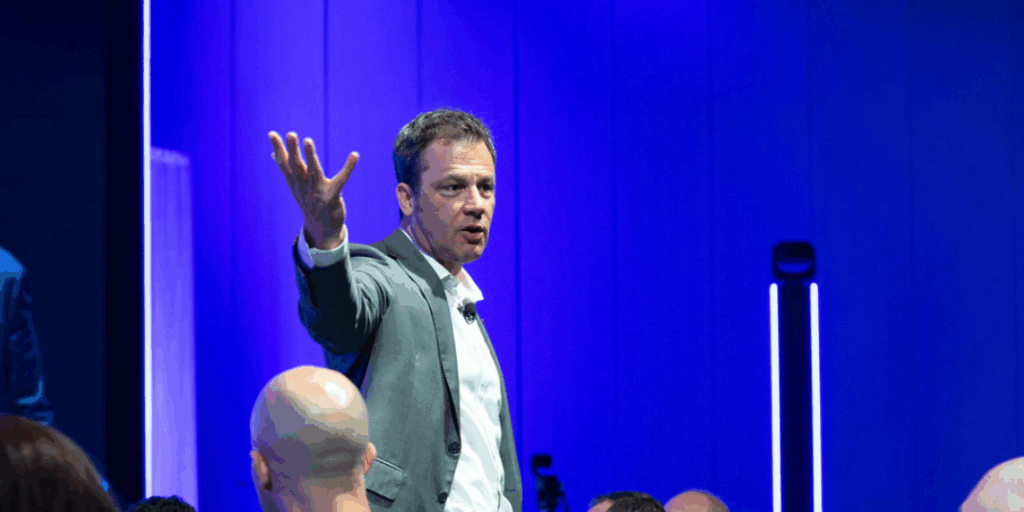Are you nervous before you speak in public?
Panic-stricken, sweating, I-would-rather-be-anywhere-but-here-and-want-to-run-sprinting-away-from-the-auditorium nervous?
I know this fear. I know super talented people who avoid public speaking opportunities because they simply don’t want to deal with the anxiety and misery leading up to the event.
I call this feeling “throw up nervous.”
The official name for this fear is glossophobia, and it’s remarkably common – as many as 77% of people report experiencing fear of public speaking.
Fortunately, there are ways to manage your presentation anxiety. Whether you are preparing for a conference keynote, big sales presentation or a wedding toast, try these 10 tips to get those negative feelings under control.
Know Your Material Cold
Preparation breeds confidence. You need to be cruising on auto-pilot when the nerves take over. If you are using Powerpoint, memorize your slide order so can move seamlessly from one idea/concept to the next.
Kick Things Off with a Question or Exercise
Audience participation can ease anxiety and tension. Making the presentation interactive can improve relevancy and make the experience more personal.
Control Your Environment
Check out the room where you’ll be speaking in advance, if possible. Try to control any elements that you reasonably can. For example, I back up my content in the cloud, use my own remote, suggest lighting and seating arrangements, and rock my own musical playlist as people enter the room.
Visualize Success
At least a few hours before you present, spend time meditating and visualizing the presentation going well. Recall a time prior when you were dead-on fantastic. If possible, I will try and get into the room the night prior and deliver my presentation (often, alone in the dark). This way my visualization includes the actual physical setting where I’ll be speaking.
Tell a story
Make your key points with authentic examples you have lived that the audience can identify with or relate to. Stories inspire us and help us invest in an idea more completely. They offer an emotional connection that goes beyond a data set. They compel us to take action. Storytelling is the most powerful form of persuasive communication, and great stories can endure the test of time.
Be Yourself
Be true to yourself, the material and the message. For example, trying to incorporate stand-up comedy simply won’t work if you aren’t that funny. (I learned this the hard way.)
Manage the clock
Practice your timing. 5 minutes early is always better than 10 minutes over.
Have Fun
The audience wants you to succeed. And even if you are nervous, they never need to know.


![[RE] Featured Image - Sales Growth Strategies A group of employees walking up the stairs while chatting in a concrete office building](https://ryanestis.com/wp-content/uploads/bb-plugin/cache/RE-Featured-Image-Sales-Growth-Strategies-1024x538-panorama-2f257ae51c972272de1c7aed28b01877-.png)
![[RYAN] Featured Image - Sales Manager Skills A person in a business suit shaking hands with a colleague](https://ryanestis.com/wp-content/uploads/bb-plugin/cache/RYAN-Featured-Image-Sales-Manager-Skills-1024x538-panorama-a9e7a83da9a5ca4e1d38b36e87492f06-.png)
![[RYAN] Featured Image - Consultative Sales Approach [RYAN] Featured Image - Consultative Sales Approach](https://ryanestis.com/wp-content/uploads/bb-plugin/cache/RYAN-Featured-Image-Consultative-Sales-Approach-1024x538-panorama-42c09bf12887088a921116094d899f06-.png)
![[RYAN] Featured Image - Sales Tactics [RYAN] Featured Image - Sales Tactics](https://ryanestis.com/wp-content/uploads/bb-plugin/cache/RYAN-Featured-Image-Sales-Tactics-1024x538-panorama-81064ac25e005c4d692a589e275c338f-.png)




